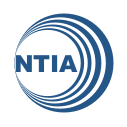 "The Public Consultation on the draft BEREC Guidelines on the
Implementation by National Regulators of European Net Neutrality Rules
concluded on 18 July 2016. The number of contributions received before
the deadline is unprecedented for a BEREC consultation, reaching almost
half a million submissions.
"The Public Consultation on the draft BEREC Guidelines on the
Implementation by National Regulators of European Net Neutrality Rules
concluded on 18 July 2016. The number of contributions received before
the deadline is unprecedented for a BEREC consultation, reaching almost
half a million submissions."The BEREC Office is currently processing the contributions received as planned. BEREC is focused on a thorough evaluation of the contributions and on the finalisation of the Guidelines, in order for all relevant information to be efficiently submitted for adoption by the BEREC Board of Regulators on 25 August 2016.
"BEREC is organising a Press conference on the BEREC Net Neutrality Guidelines on 30 August 2016 in Brussels where information on the outcome of the Public Consultation and on the final Net Neutrality Guidelines will be released.
"All interested citizens, stakeholders and media representatives are invited to participate in the event. "The BEREC Chair and Vice-Chairs will be available to answer relevant questions on the subject.
"The report on the outcome of the Public Consultation along with the BEREC Net Neutrality Guidelines will be published on the BEREC website on the same date before the Press conference. All the contributions received for the Public Consultation (if not indicated as confidential) will also be published on the BEREC website, though the personal data of the contributors will not be published."
Press Release 22 July 2016


